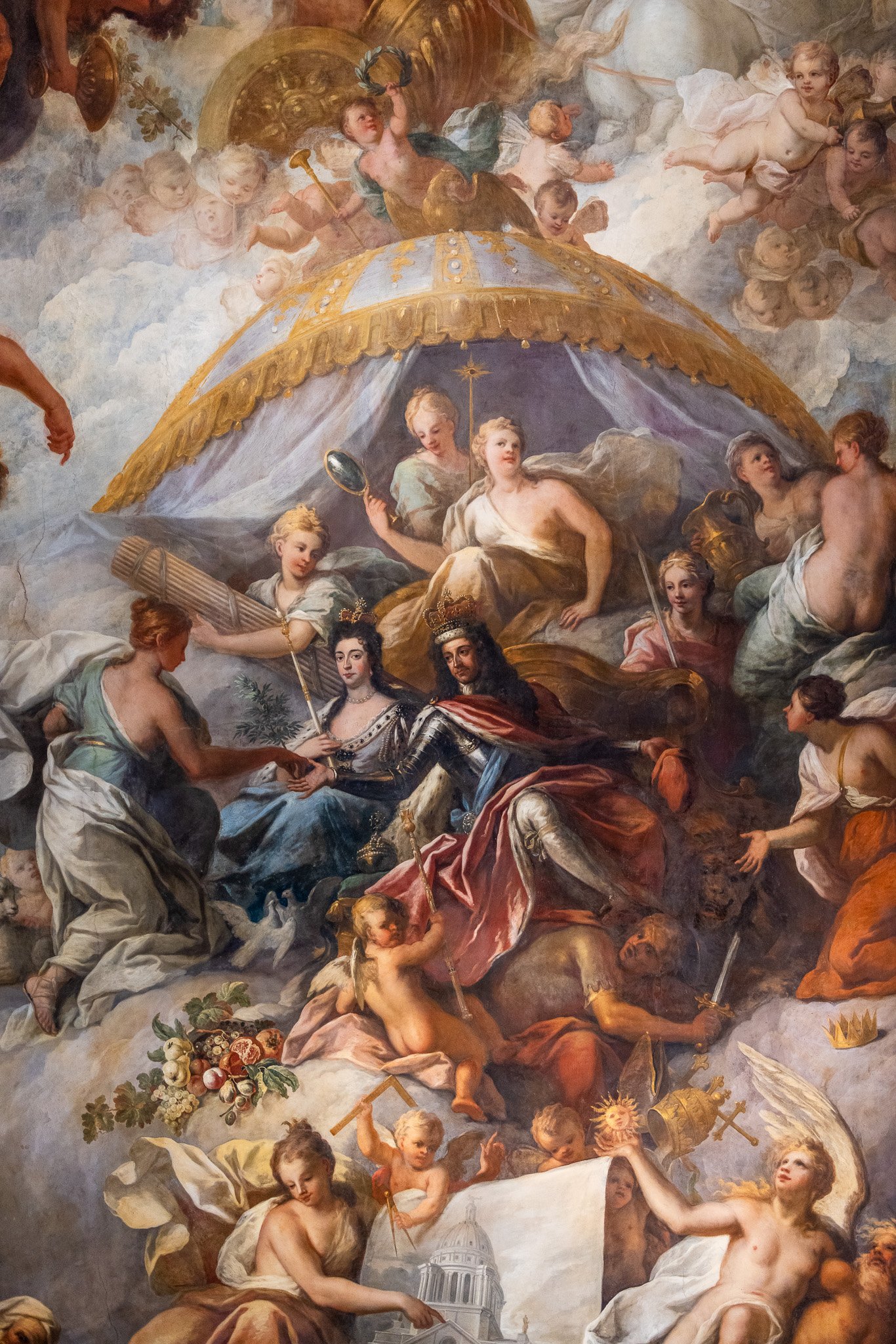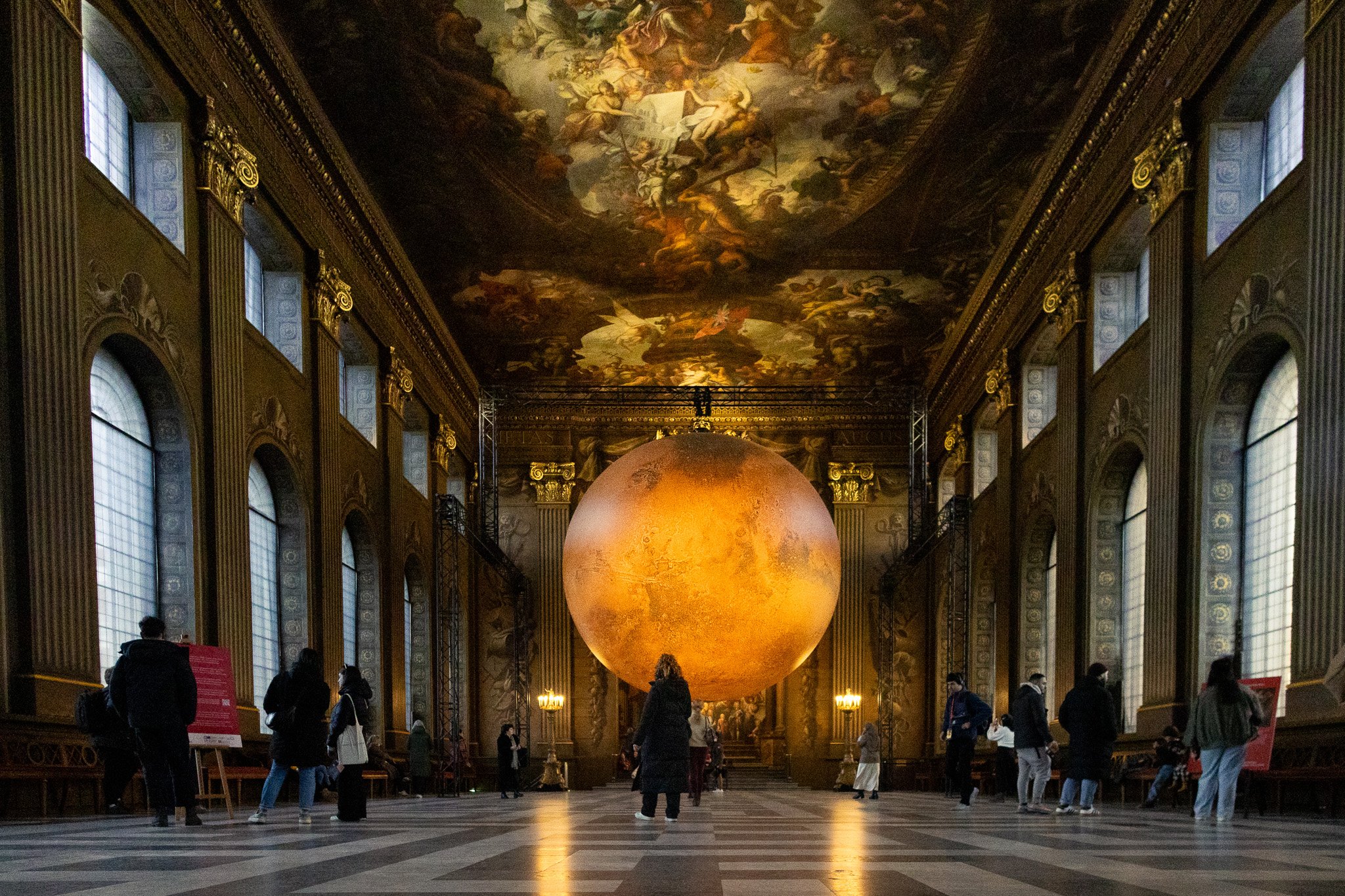The “longitude problem” was a major scientific and navigational challenge from the 16th to 18th centuries: how to determine a ship’s east-west position (longitude) at sea. Unlike latitude, which could be measured by the angle of the sun or stars, longitude required knowing the exact time difference between a ship’s location and a fixed reference point—Greenwich, England, would become that point. The problem was effectively solved in the 18th century through the development of accurate marine chronometers, most famously by John Harrison, supported by the Royal Navy and institutions like the Royal Naval College at Greenwich.
Royal Naval College, Maritime Greenwich, EN
The Royal Naval College sat at the symbolic and literal heart of this effort, located at Greenwich—home of the Royal Observatory. By the late 19th century, Greenwich was declared the Prime Meridian at the International Meridian Conference (1884), anchoring what became the global grid of longitude and latitude. This was not just a geographic decision, but an imperial imposition—rooting global spatial orientation in British authority.
Longitude—enabled by precise timekeeping—allowed Britain to control maritime navigation, enforce colonial borders, and standardize maps. The resulting "grid" of meridians and parallels is a conceptual infrastructure of Empire: a way to fix, measure, and command the globe. It functioned as an imperial architecture, dividing space into place — knowable, governable units. In this regard, the grid is never neutral—it is an encoded worldview in which space is abstracted, claimed, and regulated.
The Royal Naval College’s solution to the longitude problem thus laid the epistemic foundation for a militarized cartographic modernity, deeply tied to extractive colonial enterprises and territorial discipline. At its core, the grid is a technology of abstraction—a way to render the messy, dynamic world into discrete, knowable, and ultimately governable units. Whether it’s land, bodies, time, or pixels, the logic is the same: break it down, tag it, and control it. This same spatial rationality underpins today’s mapping systems (e.g., GPS), real estate zoning, and even urban surveillance—all drawing upon a legacy of the imperial grid.
The Cartesian coordinate system—literally a mathematical grid—was central to Enlightenment rationalism: it underwrote the idea that space (and by extension, people and nature) could be measured, ordered, and mastered. This view of the world translated easily into colonial mapping, zoning, and eventually data systems. Nicholas Mirzoeff describes this as part of the “visuality of whiteness”—a framework that makes control look like knowledge (White Sight, 2023).
Cartesian Coordinate System
Benedict Anderson identifies the census, the map, and the museum as tools that “profoundly shaped the way in which the colonial state imagined its dominion” (Imagined Communities, 1983). The grid is the connective tissue across all three.
The digital grid of metadata, coordinates, and surveillance reproduces this system on new terrain. Facebook’s database schema, Google Maps' tile system, facial recognition datasets—all follow the same imperial template: divide, categorize, extract.
The “imperial grid” and the “imperial screen” are two sides of the same epistemic coin. Both function as visual regimes—ways of seeing that structure what counts as real, valuable, and visible. The grid, as Anderson notes, allowed colonizers to imagine empty, bordered territories that could be administrated, resettled, renamed. This wasn't just about geography—it was about manufacturing legibility. “Unmapped” was synonymous with “ungoverned” and “uncivilized.” Mirzoeff's “white sight” expands on this, arguing that colonial vision is not merely representational but operational—it’s a mode of command (White Sight, 2023). The screen (painting, photograph, cinema, and later the interface) is a projector of imperial vision that frames bodies, landscapes, and histories within a hierarchy of visibility. It teaches us what to see—and what not to. Together, they enforce what Mirzoeff calls a “visuality of order”—a way of seeing that suppresses other worldviews, collapsing multiplicity into a single-point perspective grounded in imperial certainty (The Right to Look, 2011).
If the grid has historically served Empire, how might we detourne it? Can it be reconfigured—not to dominate space—but to trace resistance, map entanglements, or visualize ungovernability? In my work on site-specific image-making and decolonial visual practices, this becomes a powerful question: What would a grid look like if it were built to hold memory instead of control? To map relation instead of extraction?



























